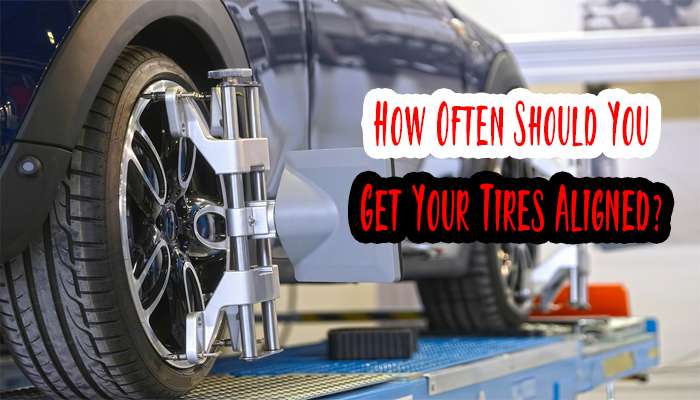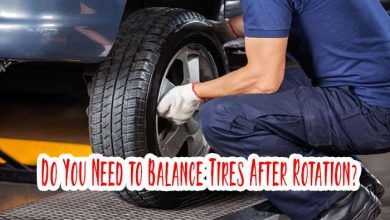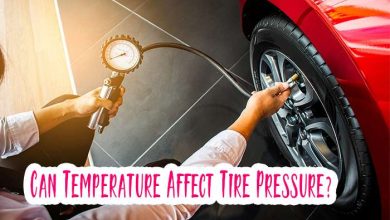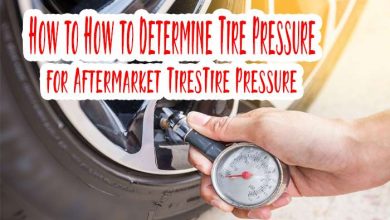How Often Should You Get Your Tires Aligned? Expert Opinion
Hey there, fellow drivers! If you’ve ever wondered how often you should get your tires aligned, you’re in the right place.
As a tire expert, I’m here to demystify the world of tire alignment, explaining why it’s essential, what factors affect alignment frequency, and the step-by-step process. Buckle up; we’re hitting the road to tire alignment knowledge!
The general rule of thumb is to align your tires every 12,000 miles or once a year, whichever comes first.
Why Does Tire Alignment Matter?

Tire alignment, also known as wheel alignment, is the process of adjusting the angles of your vehicle’s wheels to ensure they are perpendicular to the ground and parallel to each other.
It might sound like a small detail, but it has a massive impact on your driving experience. Proper alignment offers several benefits:
Read my recent post- How to Determine Tire Pressure for Aftermarket Tires?
1. Improved Tire Longevity
Misaligned tires wear unevenly. This means you’ll need to replace them sooner, costing you more in the long run.
2. Enhanced Handling
Properly aligned tires ensure your vehicle goes where you want it to, improving control and reducing the risk of accidents.
3. Fuel Efficiency
Misaligned tires cause more rolling resistance, meaning your engine has to work harder and burn more fuel. Proper alignment saves you money at the pump.
4. Comfortable Ride
Aligned tires result in a smoother, more comfortable ride. Say goodbye to that annoying vibration or pulling to one side.
Factors Influencing Alignment Frequency
So, how often should you get your tires aligned? It’s not a one-size-fits-all answer. Several factors influence the frequency of tire alignment:

1. Driving Habits
If you’re a lead-footed speedster or love hitting potholes, your tires need more frequent alignment.
2. Road Conditions
Rough and uneven roads can throw your tires out of alignment faster than smooth highways.
Read More: How Much Does Mavis Charge For Tire Installation?
3. Vehicle Type
Some vehicles naturally require more frequent alignment due to their design and weight distribution.
4. Signs of Misalignment
If you notice your vehicle pulling to one side, uneven tire wear, or steering wheel vibrations, it’s time for an alignment check.
How Often Should You Get Your Tires Aligned?
How Often Should You Get Your Tires Aligned? Getting your tires aligned every 2-3 years or every 6,000-12,000 miles is generally recommended, depending on your driving habits and vehicle type.

However, there are some cases where you may need to get your tires aligned more often, such as:
- If you hit a pothole or curb
- If you get a new set of tires
- If you notice that your car is pulling to one side
- If you have uneven tire wear
If you are unsure how often you should get your tires aligned, it is always best to consult your owner’s manual or a qualified mechanic.
Read Also: ABS and Traction Control Light On After Tire Change
Tire Alignment Step by Step Process
Curious about what happens during a tire alignment? Here’s a step-by-step breakdown:
- Initial Inspection: The process begins with thoroughly inspecting your tires, suspension, and steering components.
- Mounting the Alignment Equipment: Special sensors and cameras are attached to your wheels to measure their angles.
- Camber Adjustment: The technician adjusts the camber angle to ensure the tire is perfectly vertical when viewed from the front.
- Caster Adjustment: The caster angle is adjusted to enhance stability and steering.
- Toe Adjustment: The toe angle is corrected to ensure your tires are parallel and not pointing inwards or outwards.
- Road Test: After adjustments, a road test ensures everything feels right.
- Final Inspection: A final inspection is carried out to confirm that the alignment is within specifications.
Alignment Costs
You might be wondering about the cost of tire alignment. The price can vary based on several factors:
- Type of Vehicle: Larger vehicles, like trucks and SUVs, often cost more to align due to their size and complexity.
- Geographical Location: Prices can vary by region, with urban areas usually being more expensive.
- Additional Services: Some shops offer alignment packages with other services like tire balancing.
- Warranty: Some alignment services come with warranties, which can add to the cost.
On average, you can expect to pay anywhere from $50 to $100 for a standard tire alignment. While it might seem like an expense, its benefits in terms of tire longevity, safety, and fuel savings make it a worthwhile investment.
Read Also: What Do Tire Shops Do With Old Tires?
Frequently Asked Questions
What’s the difference between wheel alignment and tire balancing?
Wheel alignment and tire balancing are often confused but serve different purposes. Wheel alignment, as discussed, ensures your tires are properly angled. On the other hand, tire balancing deals with the weight distribution of your tires. It’s essential for a smooth ride and to prevent uneven tire wear.
Can I drive with misaligned tires?
Yes, you can, but it’s not advisable. Misaligned tires affect your vehicle’s handling, reduce fuel efficiency, and increase tire wear. While you won’t immediately break down, addressing the issue promptly is best.
Can misaligned tires cause accidents?
Misaligned tires can compromise your vehicle’s stability and control, making it more susceptible to accidents, especially in challenging driving conditions. Ensuring proper alignment is essential for your safety.
How do I check if my tires are misaligned?
Look for signs like your vehicle pulling to one side, uneven tire wear, or steering wheel vibrations. If you notice any of these, it’s time for a professional alignment check.
How long should a tire alignment last?
A tire alignment should last anywhere from 6,000 to 8,000 miles or once a year, depending on your driving habits and the road conditions you encounter. Regular maintenance and periodic checks can help ensure alignment remains within specifications.
Conclusion
In the grand scheme of vehicle maintenance, tire alignment might seem like a small detail, but it plays a significant role in your safety, comfort, and wallet. Regular alignment checks and adjustments extend your tires’ life and enhance your driving experience.
So, if you’ve been wondering how often you should get your tires aligned, remember that prevention is better than cure. Keep those wheels in line, and you’ll enjoy a smoother, safer, and more fuel-efficient ride.
Reference Link
For more information on tire alignment, check out this informative article: Tire Alignment 101
Glossary
- Tire Alignment: The adjustment of wheel angles to ensure they are perpendicular to the ground and parallel.
- Camber: The angle at which the tire is tilted concerning the vertical axis.
- Caster: The angle at which the front suspension is positioned in reference to the vertical axis.
- Toe: The angle at which the tires point inward or outward when viewed from above.




